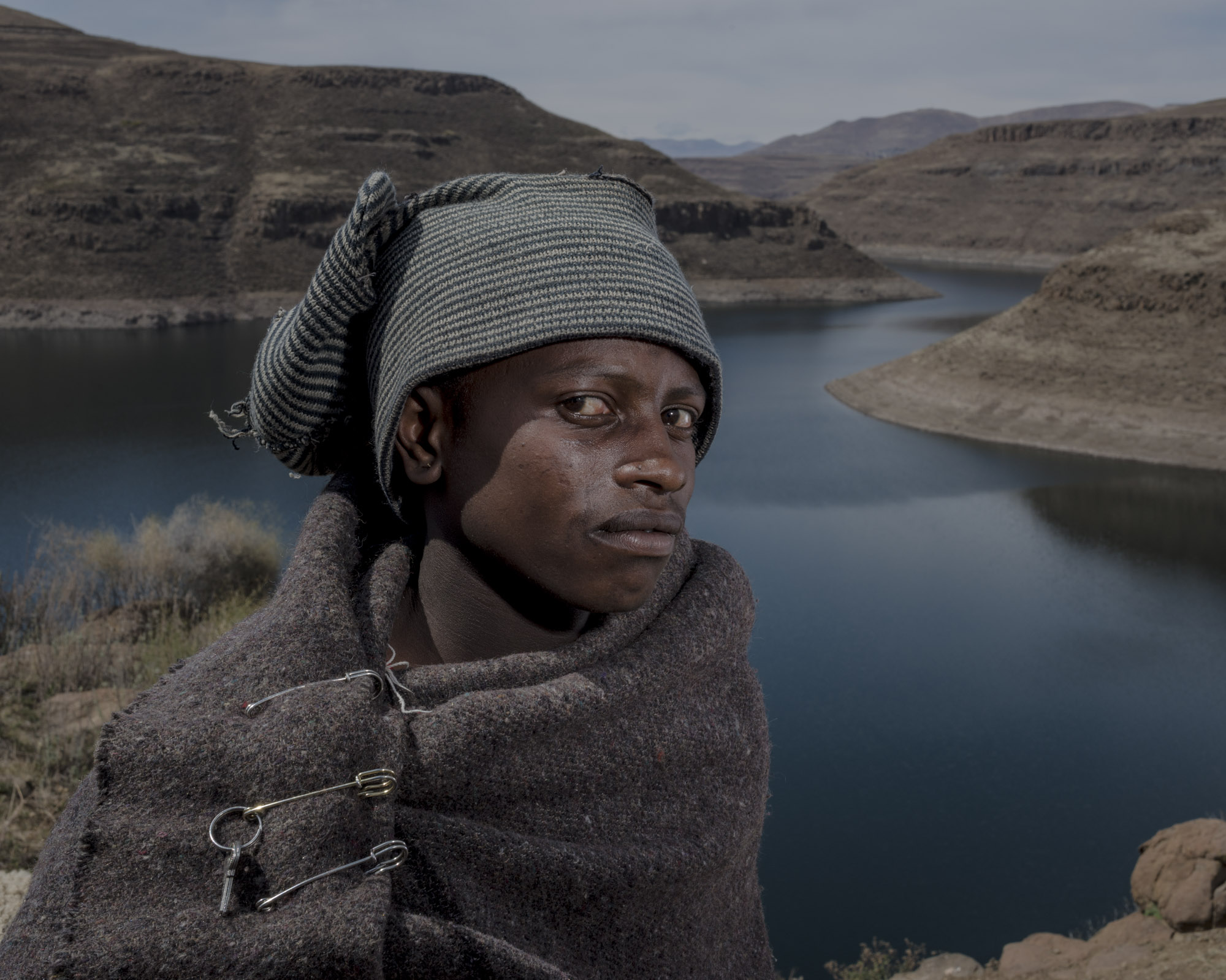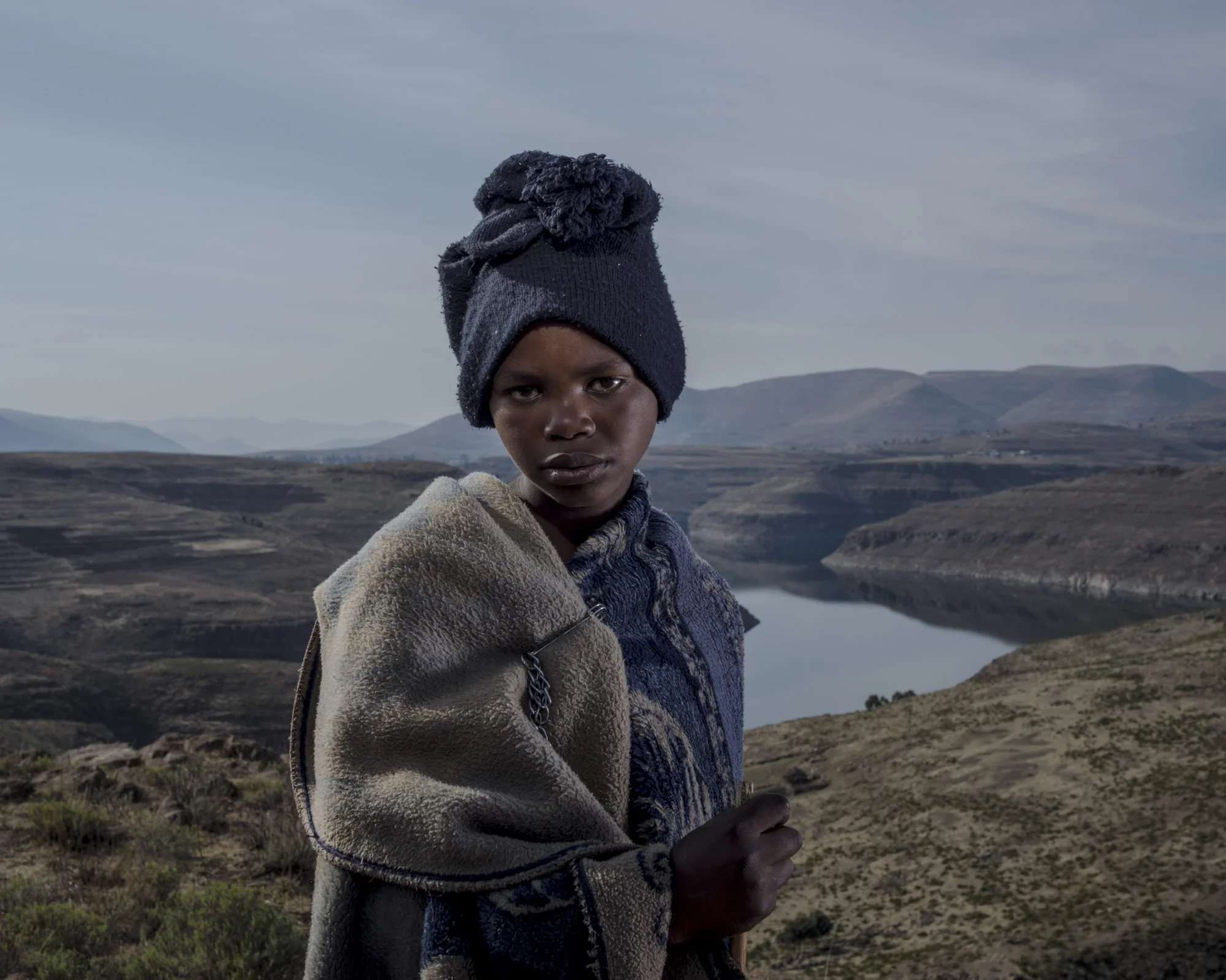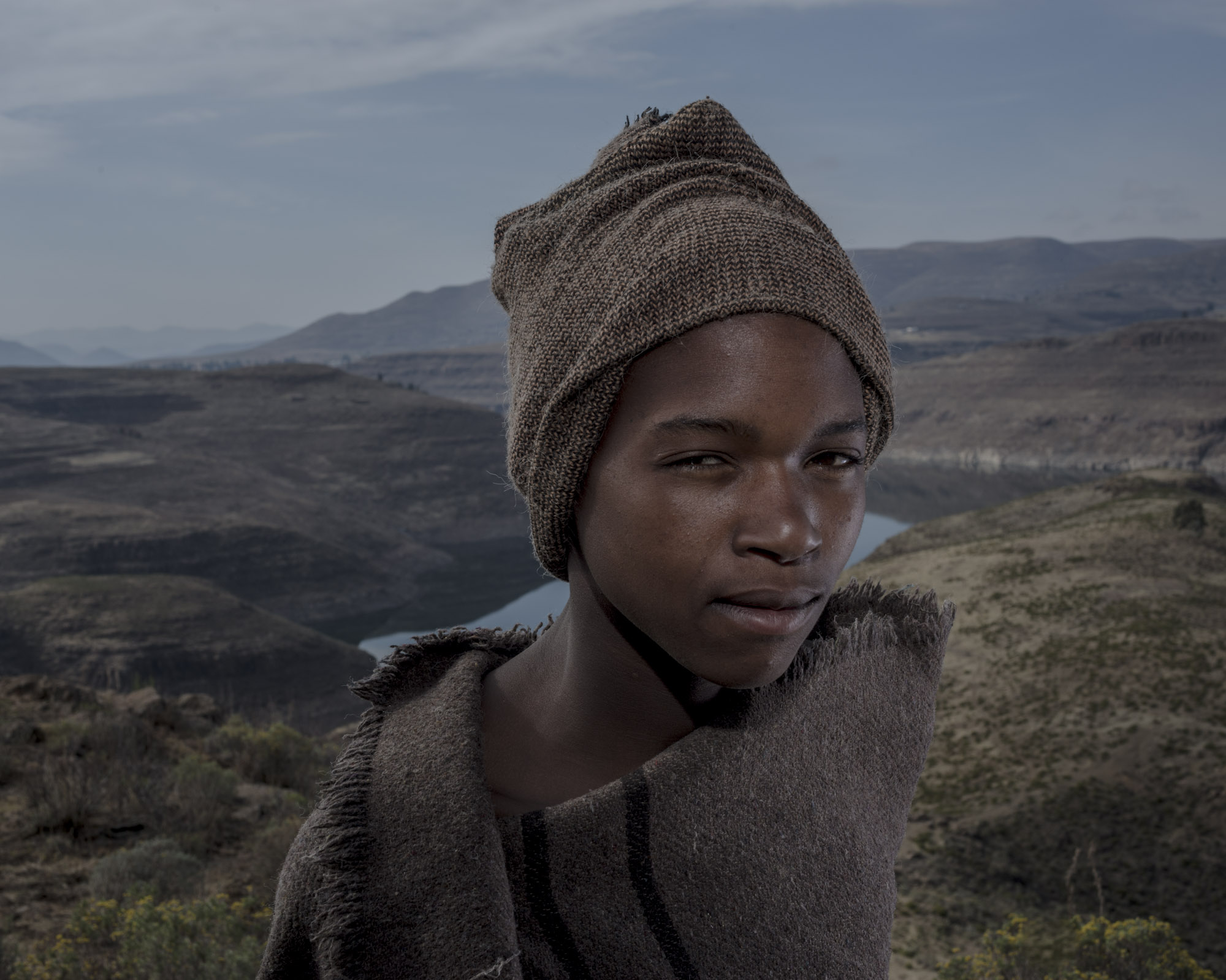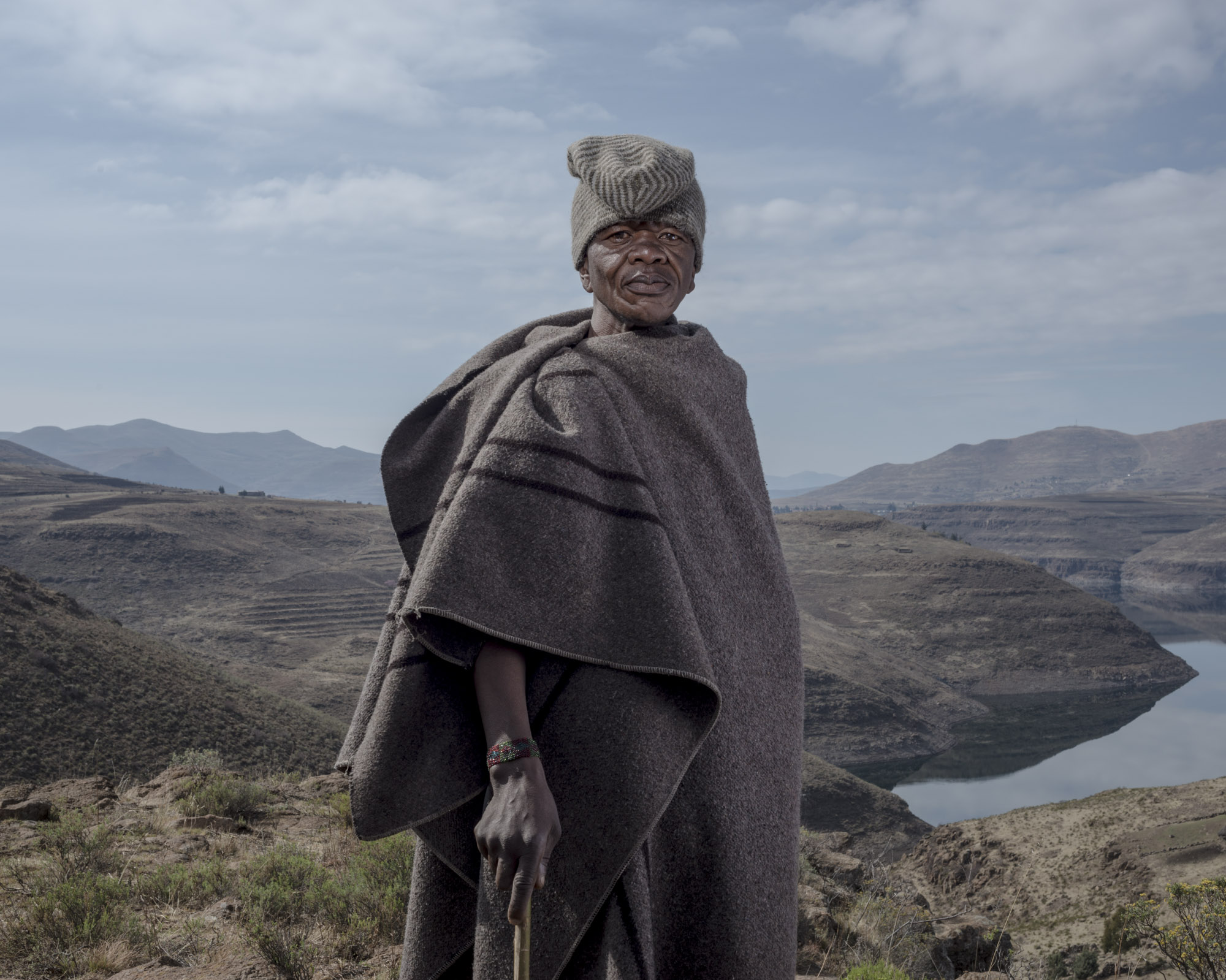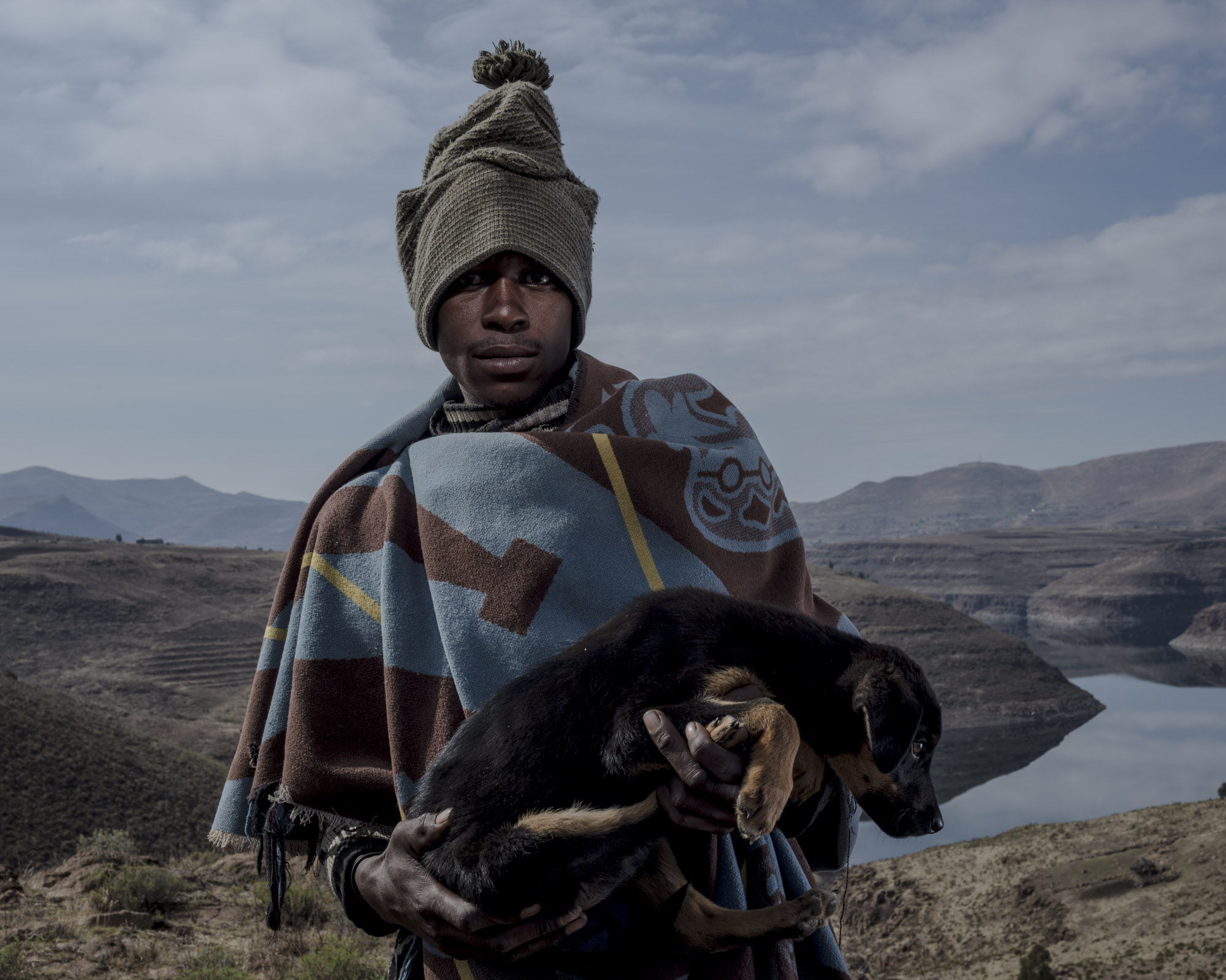The Open Society Foundation in New York nominated the Lesotho work for their Instagram feed.
These portraits and landscapes were made between July and September 2015 on three trips to Lesotho which I undertook in order to introduce myself to the communities, meet the village leaders where I would be working, check the light, find someone to help me solve practical problems and get a sense of conditions around the dam. The work was done in the villages of Sephareng, Mokhethuoa, ha Maphoto and ha Mpeli.
Initially I went to Lesotho to photograph the Basotho herders living alongside the Katse Dam in their traditional headgear, balaclavas. As someone who considers questions of privilege and power in relation to portraiture the conundrum of photographing subjects whose countenances are obscured by a woolen hat with only slits for eyes appealed to me. The portraits of the herders wearing their blankets are a by-product of my initial aim, but have come into their own – as equal, serene counterpoints to Balaclava series. These portraits humanise the balaclava photographs.
The nation-wide trend of wearing Basotho blankets can be traced to a single incident in which a certain ‘Mr. Howel’, a trader, presented King Moshoeshoe I with a blanket in 1860. Blankets came to replace traditional leopard skin karosses and today are worn not only for warmth, but also symbolically – indicating important life stages such as coming of age, marriage and national milestones like Independence Day on 4 October. Their patterns, which often incorporate inherited colonial insignia, add further nuance.
I am completely taken by the dam’s monstrous presence. In 1998, when Mandela was abroad, South Africa fought a small war with Lesotho, ostensibly for political reasons, but also in order to secure rights to Lesotho’s water. The water from the Katse Dam flows straight to the Gauteng Province, which contains Johannesburg and the thirsty Witwatersrand industrial region. The irony is that, since the dam's construction in the nineties (when Lesotho was dubbed the ‘Water Castle’ for South Africa) Lesotho in 2016 has been experiencing a severe water crisis. The LHWP Treaty, which is only reviewed every 12 years states that ‘Neither of the Parties shall cause or permit under any circumstance nor for any reason whatsoever any unilateral interference with the delivery of water to the Designated Outlet Point" means that Lesotho is legally bound to continue sacrificing its "white gold" at a stipulated rate of 4,2 million litres of water per minute while thousands of Basotho are unable to access drinking water or grow enough food to eat.
What came to appeal to me, in the words of Alan Sekula, are “the imaginary and material geographies of the advanced capitalist world.” This material geography has direct pipelines to the privately-owned mines in South Africa, which employ ±43 000 Basotho Basotho in terrible conditions, and which claim the lives of around 100 Basotho miners every year. Four of the 34 slain during the Marikana Massacre of 2012 were Basotho.
The dam is entirely sinister. It sits abstracted and far below the line of horse, pedestrian and occasional car traffic. It has the dense, depthless magnetism of stagnant mine water, and has engendered earthquakes, virulent microclimates and an array of social problems. To me it looks like an info graphic representing the insidious flow of capital. I have made the landscapes from vantage points, which confound the viewers’ sense of scale, or enhance the ridiculous, unnatural vertices, which dominate the land’s point of contact with the water. I have also adopted a formal approach, which confuses positive and negative space. Equally sinister are deals struck by the Lesotho Highlands Water Project (LHWP) with displaced, discontented Basotho. Although they claim to be compensating the poor, rural villagers for the negative effects of the dam, compensation hasn’t unfolded in the way it was promised. Protracted action against the LHWP will continue for as long as water flows to South Africa.
I first visited Lesotho in the 1983 and have been there frequently since 2011.
Here is a resource of published articles on the LHWP saga since 2010.
These works are for sale.






































